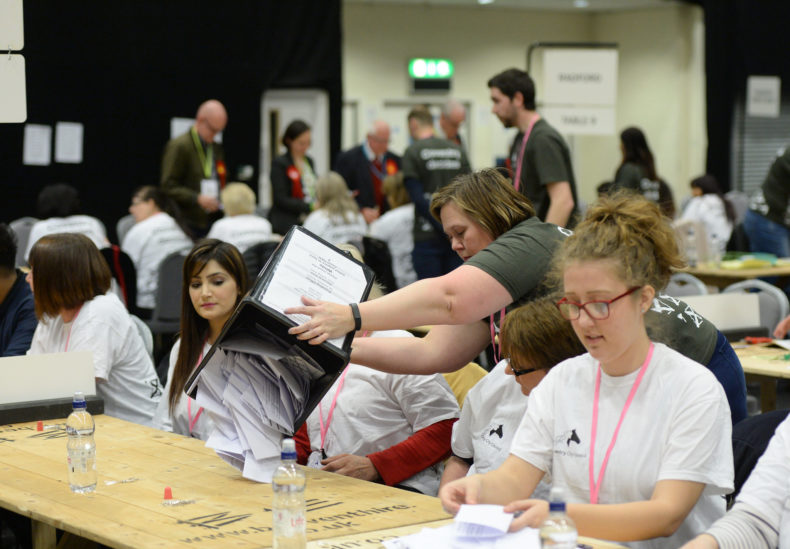How to draw national trends from local election results: national vote share calculations

Each May* sees a big round of local elections on the first Thursday of the month. But councillors are elected for either four or five year terms of office and some councils elected all their councillors in one go, some elect one third at a time and some elect a half at a time.** Add to that the smaller effect of council reorganisations and boundary changes and you end up with a lot of variation from year to year in what seats are up for election.
That variation in what’s up each May means that simply tallying up the total votes*** for each party tells you something, but doesn’t let you compare election performance across different years.
Which is why both the BBC (with PNS, Projected National Share of the vote) and also a pair of academics, Colin Rallings and Michael Thrasher (with NEV, National Equivalent share of the Vote), independently produce notional national vote share calculations. What both methods do is extrapolate from the elections that were held to project what the national vote share would have been for each party if there had been elections everywhere.
The two calculations take different approaches. Put simply, one looks at votes cast and projects from that and the other looks at changes in votes cast and projects from that. Reassuringly, both approaches have been used for many years now and consistently produce very similar results. Getting the same picture from two different methodologies gives us more confidence in that picture.
You can find all the historic figures for both approaches in my LocalBase spreadsheet.
* Public health emergencies excepted. May local elections have been delayed due to foot and mouth and due to COVID-19. They have also been delayed to coincide with European Parliament elections being held the following month.
** Please don’t ask why.
*** There are also the issues of how best to tally up votes in multi-member ward elections. The conventional way to do this is to take the vote for the top candidate from each party. The biggest advantages of this approach are that it is simple and that it’s what has been widely done for many years, so it also gives you the most comparable data.
Sign up to get the latest news and analysis
"*" indicates required fields